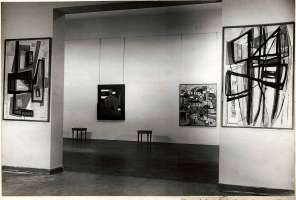Abstract
The comparative method is currently making a comeback in the literature on Latin American art: as a way to avoid a singular focus on local histories and as a response to the urgency of thinking globally in the field of contemporary art history. In addition, many curatorial practices use comparative strategies as a conceptual means of organizing exhibitions, even though the basic pattern of interrelation among artworks might not always be fully clear. A substantive reflection on what constitutes the core of a comparative method is needed to give this method a solid foundation and continuing effectiveness. Only a comparative analysis that considers its own shortcomings and its criticisms can function as the basis for a “thick description” of regional stories, as well as for a plural and open reading of their possible entanglement or interdependence. This article therefore reevaluates the appropriateness of a comparative methodology for the study of modernist art on the South American continent.


